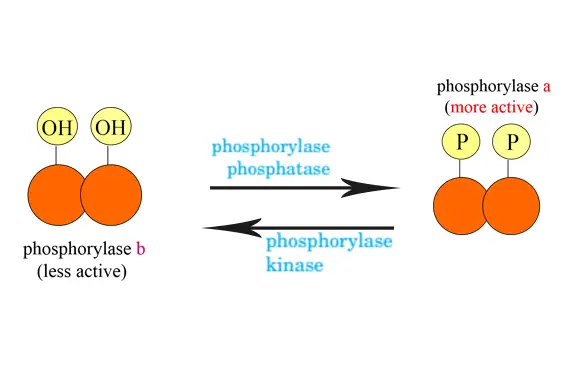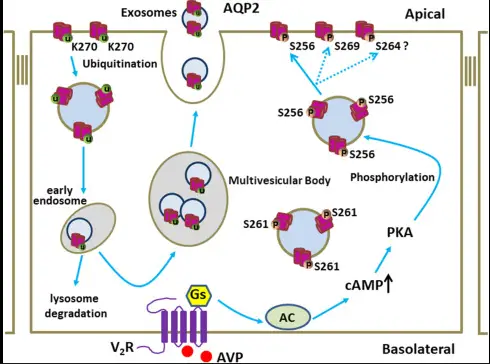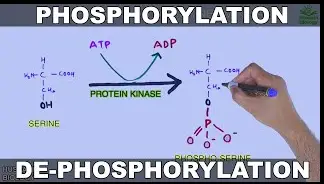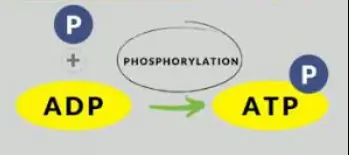Phosphorylation and dephosphorylation are two critical processes in cellular signaling that affect numerous biological functions. These biochemical reactions involve the addition or removal of phosphate groups to proteins or other organic molecules, triggering or inhibiting various cellular activities. Such modifications can dictate the functional state of a protein, ultimately influencing cellular behavior across organisms.
Phosphorylation refers to the addition of a phosphate group to a molecule, primarily proteins, facilitated by enzymes known as kinases. This process is essential for activating or deactivating enzyme functions and transmitting signals within the cell. Conversely, dephosphorylation involves the removal of a phosphate group, carried out by enzymes called phosphatases, which generally serves to switch off or modulate the function of the protein.
These mechanisms are not just crucial for the routine maintenance of cellular activities but also play a pivotal role in the regulation of growth, division, and death of cells. Abnormalities in these processes are linked to various diseases, including cancer and diabetes, making them key targets for therapeutic interventions.

Phosphorylation Explained
Definition and Basics
Phosphorylation is a biochemical process crucial for controlling various cellular activities. At its core, phosphorylation involves the addition of a phosphate group (PO4) to a protein or other organic compounds. This modification changes the structural conformation of the molecule, altering its activity and function within the cell. Phosphates are negatively charged, and when attached to a protein, they can significantly change how that protein interacts with other molecules.
Role in Cellular Function
The role of phosphorylation in cellular functions is both vast and critical. Here are some key aspects:
- Signal Transduction: Phosphorylation acts as an on/off switch in many cellular processes. When a protein is phosphorylated, it can activate or deactivate a signal transduction pathway, leading to changes in cell behavior.
- Protein Function: Many proteins require phosphorylation to become active. This modification can help proteins to bind to other molecules or assemble into larger complexes necessary for cell function.
- Cell Cycle Control: The cell cycle is tightly regulated by phosphorylation. Certain proteins, when phosphorylated, lead to progression or arrest of the cell cycle, ensuring cells divide at the right time.
Key Enzymes Involved
Several enzymes play a role in the phosphorylation process, primarily kinases. Kinases are responsible for transferring phosphate groups from high-energy, phosphate-donating molecules to specific substrates. This transfer is crucial for activating or inactivating target proteins that are involved in critical pathways such as glycolysis, DNA replication, and cell signaling. Some well-known kinases include:
- PKA (Protein Kinase A): Essential in many pathways, particularly those involving the regulation of metabolism and gene transcription.
- MAPK (Mitogen-Activated Protein Kinase): Plays a significant role in pathways related to cell growth, division, and differentiation.
Dephosphorylation Explained
Definition and Basics
Dephosphorylation is the reverse process of phosphorylation. It involves the removal of a phosphate group from an organic molecule, usually a protein. This is typically carried out by another class of enzymes known as phosphatases. Dephosphorylation is crucial for turning off signal pathways and making sure that cellular activities are not excessively activated.
Functional Importance
The importance of dephosphorylation in cellular function includes:
- Regulating Signal Pathways: Just as phosphorylation activates pathways, dephosphorylation shuts them down. This balance is necessary for the cell to respond appropriately to changes in the environment or its internal state.
- Maintaining Protein Stability: By removing phosphate groups, phosphatases can stabilize proteins, ensuring they do not aggregate or degrade prematurely.
- Modulating Enzyme Activity: Many enzymes are deactivated through dephosphorylation, preventing overactivity that could lead to cellular damage or disease.
Enzymatic Mechanisms
Phosphatases, the enzymes responsible for dephosphorylation, can be broadly categorized into two groups based on their substrate specificity:
- Serine/Threonine Phosphatases: Target proteins phosphorylated on serine or threonine residues.
- Tyrosine Phosphatases: Specifically remove phosphate groups from tyrosine residues.

Comparative Analysis
Process Differences
While phosphorylation and dephosphorylation involve the addition and removal of phosphate groups respectively, their impact and control within the cell differ significantly. Phosphorylation is generally associated with turning pathways on, whereas dephosphorylation is about shutting them down. The enzymes involved also differ, with kinases adding and phosphatases removing phosphate groups.
Impact on Cellular Pathways
The impact of phosphorylation and dephosphorylation on cellular pathways is profound:
- Phosphorylation: Promotes cell survival, growth, and proliferation by activating signaling pathways.
- Dephosphorylation: Prevents overactivation of cellular processes, aiding in cycle arrest, apoptosis, or recovery from cellular stress.
Enzymatic Activity Contrast
Kinases and phosphatases, despite having opposing functions, are often co-regulated and co-localized within the cell. This proximity ensures that the cell can rapidly respond to changing conditions by either activating or deactivating specific pathways. Their enzymatic activity is finely tuned by other post-translational modifications, allosteric changes, or localization changes within the cell.

Biological Significance
Regulation of Metabolic Pathways
Phosphorylation and dephosphorylation play pivotal roles in regulating metabolic pathways, which are crucial for energy production and resource allocation within cells. For instance, the phosphorylation of enzymes in the glycolysis pathway, a critical energy-producing process, allows cells to quickly respond to changes in energy demand. This regulation ensures that energy production is tightly aligned with cellular needs, preventing wastage and supporting efficient cellular function.
Impact on Gene Expression
These processes significantly affect gene expression by modifying transcription factors, proteins that bind DNA and influence the transcription of genes into RNA. Phosphorylation can either enhance or inhibit the ability of transcription factors to bind DNA, thus controlling which genes are turned on or off in response to various cellular signals. This dynamic adjustment plays a critical role in cellular adaptation and survival.
Examples in Human Physiology
In human physiology, phosphorylation and dephosphorylation are integral to many functions:
- Muscle Contraction: Phosphorylation of myosin light chains in muscle fibers regulates muscle contraction and relaxation.
- Hormonal Regulation: Many hormones exert their effects through phosphorylation, such as adrenaline stimulating glycogen breakdown in liver cells via the phosphorylation of glycogen phosphorylase.
- Neural Communication: In neurons, the phosphorylation state of ion channels influences neuronal activity and neurotransmitter release, impacting everything from muscle reflexes to memory formation.
Technological and Research Applications
Drug Development
The critical roles of phosphorylation in disease mechanisms have made it a target for drug development. Kinase inhibitors, for example, are a class of drugs that block specific kinase enzymes from phosphorylating their substrates, used effectively in cancer therapy to slow tumor growth and spread by inhibiting abnormal cell signaling pathways.
Disease Diagnosis and Treatment
Phosphorylation patterns are biomarkers for many diseases, including cancer and Alzheimer’s disease. Detecting changes in these patterns can help diagnose diseases early, improving treatment outcomes. In clinical settings, assays that measure the phosphorylation state of specific proteins can guide therapy choices, such as selecting the appropriate kinase inhibitor for a particular cancer type.
Future Research Directions
Ongoing research aims to further decipher the complex roles of phosphorylation and dephosphorylation. Areas of focus include:
- Longevity and Aging: Understanding how phosphorylation affects aging cells and the regulation of lifespan.
- Personalized Medicine: Developing more precise treatments based on individual phosphorylation patterns.
- Neurodegenerative Diseases: Exploring how abnormal phosphorylation contributes to diseases like Parkinson’s and developing interventions to correct these aberrations.
Common Challenges
Measurement Techniques
Accurately measuring phosphorylation states presents challenges due to the transient and reversible nature of these modifications. Current techniques include:
- Mass Spectrometry: Highly sensitive and accurate but requires expensive equipment and expert handling.
- Western Blotting: Commonly used for protein detection but less quantitative and can be ambiguous without proper controls.
Interpretation of Data
Interpreting phosphorylation data requires a deep understanding of cellular contexts and signaling pathways, as changes in phosphorylation can have diverse impacts depending on the cell type, the state of the cell, and the environment.
Research Limitations
Several limitations hinder phosphorylation research:
- Complexity of Signaling Networks: The vast interconnectivity of signaling pathways can obscure the specific effects of phosphorylation changes.
- Technical Limitations: The difficulty in distinguishing between the effects of phosphorylation and other post-translational modifications.
- Biological Variability: High variability between individuals, tissues, and even cells can complicate the interpretation of experimental results and the development of generalizable findings.
Frequently Asked Questions
What is Phosphorylation?
Phosphorylation is the process where a phosphate group is added to a molecule, particularly proteins, which can change the molecule’s function and activity within the cell. This process is critical for controlling various cellular processes, including metabolism, cell division, and signal transduction.
How Does Dephosphorylation Work?
Dephosphorylation is the removal of a phosphate group from an organic molecule, often a protein, reversing the effect of phosphorylation. This action is crucial for turning off signal transduction pathways and ensuring that cellular responses do not over-activate, maintaining cellular health and function.
Why are These Processes Important?
Phosphorylation and dephosphorylation are essential for the regulation of many cellular processes. They help control the activity of proteins and enzymes, ensuring that cellular activities such as growth, division, and programmed cell death occur correctly and at appropriate times.
Can Phosphorylation Cause Diseases?
Yes, abnormal phosphorylation has been linked to several diseases, including cancer, Alzheimer’s disease, and diabetes. Errors in phosphorylation can lead to unchecked cell division, poor cell regulation, and dysfunctional metabolic pathways, contributing to disease progression.
Conclusion
Phosphorylation and dephosphorylation serve as fundamental mechanisms by which cells regulate a vast array of biological processes. Their impact stretches from minute cellular functions to major physiological responses in multicellular organisms. A deeper understanding of these processes enhances our ability to diagnose, treat, and possibly prevent diseases associated with their dysregulation.
Continued research into the intricacies of phosphorylation and dephosphorylation not only promises to enrich our understanding of cellular biology but also paves the way for innovative therapeutic strategies. Such advancements are crucial in the ongoing effort to combat diseases that arise from cellular control mechanisms gone awry.

